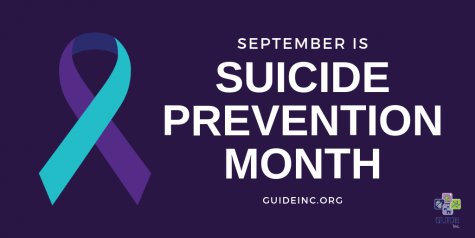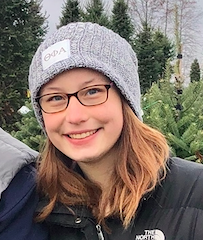September marks awareness and prevention
September 24, 2021
GOING GOLD FOR CHILDHOOD CANCER
The month of Sept. represents an essential time for families who have been affected by childhood cancer. Childhood Cancer Awareness month lasts for the entirety of Sept., and holds the main focus on raising awareness not only about childhood cancer, but also the lack of funding that childhood cancer research receives each year.
According to Alex’s Lemonade Stand, an organization that works toward raising both funding and awareness for childhood cancer, only 4 percent of funding from the National Institute of Health goes toward research for childhood cancer. With a lack of funding comes a lack of treatments available for the children who are being diagnosed each day, and with this comes a new set of challenges for both the children and loved ones.
In 2018, Alex’s Lemonade Stand found 15,590 children were diagnosed with cancer. With the number of children being diagnosed rising each day, there is an increase in the need for up-to-date and reliable information in order to best treat each case that is diagnosed. However, with the lack of funding, the treatment options for children are limited.
The National Cancer Institute (NCI) describes childhood cancer as one of the more difficult kinds of cancers to treat, detailing that, “the types of cancers children develop, and the biology of those cancers, generally differ from those of cancers diagnosed in adults.”
Due to these differences between children and adults, it makes it more difficult to not only diagnose, but to also treat cancer in children.
As explained by the NCI, “children are not just small adults and that specialized treatments tailored to childhood cancers are needed.”
Children react differently to treatments in comparison to adults, and so being able to adapt treatments for children is a large part of what makes up the research behind different treatment plans for children. Being able to work toward the research for clinical trials such as immunotherapy and molecularly targeted therapies, allows the gap between adult and child treatments to be bridged together.
This research and funding is also important when it comes to helping children with cancer be protected from the coronavirus and its variants.
According to St. Jude, while some cancer patients are able to recover from COVID-19 with little difficulty, for others it can become far more serious.
“Cancer treatments, including radiation and certain medicines, may weaken the skin or membranes lining the mouth and digestive tract. This can allow some kinds of germs to enter the body more easily,” St. Jude said in an article from August 2021.
From this information, the research behind how not only how to best help patients who contract COVID-19 is essential, but also how to continue the treatment for those who need it.
Childhood Cancer Awareness month is more than just raising awareness about childhood cancer. It is also about educating the public about the effects that childhood cancer can have on not only the children, but on the family of the child as well. With an increase in not only funding, but also a general knowledge about childhood cancer, the research aspect of cancer can start to be pushed into a better direction and in turn, start to save lives.
For more information about Childhood Cancer or organizations that support families, check out the resources below:
St. Jude’s Children’s Research Hospital, Alex’s Lemonade Stand, The Cleveland Clinic, Nationwide Children’s Hospital, Akron Children’s Hospital, St. Baldrick’s Foundation and Make A Wish Foundation.
GOING PURPLE FOR SUICIDE PREVENTION

September is a time to focus on mental health and the warning signs in loved ones of suicidal tendencies. The National Alliance of Mental Illness (NAMI) gives us the information health professionals and the general public need to know for suicide prevention and how to build survivors up and away from their past selves. It is also a time for families and friends to gather together and grieve from the loss of a loved one from suicide. This month is a mental ‘self check’ time period.
NAMI will use this time to “spread hope and vital information to people affected by suicide.”
Having suicidal thoughts is a mental condition. Suicide is a topic NAMI believes should be talked about year-round.
Their goal is to ensure that people have the resources they need to seek help and discuss suicide prevention. NAMI also plans to highlight “Together for Mental Health’’ in hopes people will share their voices to advocate for better mental health care. NAMI wants the victims of suicidal thoughts to have a number to call, a friend to talk to and all the support needed to get through it.
According to the Center for Disease Control and Prevention (CDC) and the National Institute of Mental Health, “Suicide rates have increased by 35% since 1999.” With proper education on mental health and reliable resources for victims of suicidal thoughts, hopefully that 35% will decrease.
There are three main stages to look out for in order to prevent suicide. As explained by NAMI, there are suicidal ideations, suicidal warning signs and suicidal behaviors. Each increasingly gets worse and it affects everyone differently. It is important to be aware of these stages so you may get the person struggling with the correct help.
The alliance expresses suicidal ideation as “a person has thoughts viewing life as meaningless or that nothing matters.”
This is the first sign to get help, but often goes unnoticed due to the subject matter being taboo and not one many people want to get involved in. These thoughts become more frequent until they become more visible. These are called the suicidal warning signs.
NAMI defined the suicidal warning signs as: increased alcohol or non-prescribed drug intake, aggression or mood swings, withdrawing themselves from loved ones and activities, and impulsive or reckless behavior.
Suicidal behavior is more severe and needs immediate attention as the person’s life is at risk. NAMI lists certain behaviors someone would exhibit to be collecting pills, purchasing weapons, giving away possessions, tying loose ends and saying goodbye to loved ones. If this behavior is noticed in someone, become their support person and get that person the psychiatric help they need.
There are ways to support friends and loved ones in a crisis. NAMI gives examples on how to support a loved one during a crisis. The most important thing is to remember how to be patient, speak openly and honestly and to avoid anger or other negative emotions that could escalate the situation.


